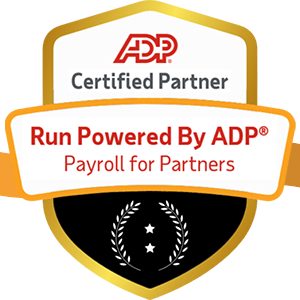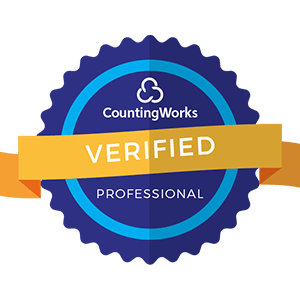The world of work is changing at a dizzying pace. Technological advancements, shifting economic landscapes, and evolving consumer demands reshape industries and transform the skills required for success. In this dynamic environment, reskilling and upskilling have emerged as critical strategies for organizations looking to future-proof their workforce and stay ahead of the curve.
Why Reskilling and Upskilling Matter
According to a recent report by the World Economic Forum, by 2025, 50% of all employees will need reskilling due to the adoption of new technologies and the changing nature of jobs. This staggering statistic underscores the urgency for businesses to invest in their most valuable asset: their people.
Reskilling and upskilling offer a proactive approach to navigating the future of work. By equipping employees with the knowledge, skills, and competencies needed to thrive in the face of change, organizations can:
- Enhance adaptability and resilience: A well-trained workforce is better equipped to handle disruptions, pivot when necessary, and seize new opportunities.
- Boost employee engagement and retention: Investing in employee development demonstrates a commitment to their growth, leading to higher job satisfaction and loyalty.
- Foster a culture of continuous learning: Encouraging the acquisition of new skills creates an environment where learning is valued and innovation thrives.
- Gain a competitive edge: Companies with a skilled workforce are better positioned to innovate, deliver exceptional customer experiences, and outperform their peers.
The E-A-A-T Framework for Reskilling and Upskilling
To effectively reskill and upskill your workforce, consider adopting the E-A-A-T framework:
- Evaluate: Assess current skills, identify gaps, and anticipate future skill requirements.
- Align: Ensure learning and development initiatives are aligned with business objectives and individual career goals.
- Activate: Implement a mix of training methods, including on-the-job learning, mentoring, and digital resources.
- Track: Monitor progress, measure the impact of training, and make data-driven decisions to refine your approach.
Evaluate: Understanding the Skills Landscape
The first step in preparing your workforce for the future is understanding the current skills landscape and clearly anticipating future needs. Conduct a comprehensive skills audit to:
- Identify existing skills: Assess your current workforce's knowledge, abilities, and competencies.
- Pinpoint skill gaps: Determine areas where skills are lacking or need improvement.
- Anticipate future requirements: Analyze industry trends, technological advancements, and market demands to predict the skills that will be most valuable in the coming years.
Tools like Skills Match and Skill Survey can help streamline the evaluation process, providing data-driven insights into your workforce's strengths and weaknesses.
Align: Connecting Learning to Business Goals and Individual Aspirations

To be effective, reskilling and upskilling initiatives must align with organizational objectives and individual career aspirations. This alignment ensures that training efforts are focused, relevant, and motivated by a shared purpose.
Consider the following strategies to achieve alignment:
- Communicate the vision: Clearly articulate how reskilling and upskilling initiatives support the company's overall strategy and future success.
- Engage employees in the process: Involve team members in identifying skill gaps and shaping learning and development plans.
- Create personalized learning paths: Tailor training opportunities to individual roles, interests, and career goals.
- Emphasize the benefits: Highlight how acquiring new skills can increase job security, career advancement, and personal growth.
By connecting learning to both business goals and individual aspirations, you create a sense of shared ownership and motivation for skill development.
Activate: Implementing a Multifaceted Training Approach

With a clear understanding of skill gaps and a strong alignment between learning and business objectives, activating your reskilling and upskilling initiatives is time. Embrace a multifaceted approach to training that includes:
- On-the-job learning: Encourage employees to take on stretch assignments, participate in cross-functional projects, and seek opportunities to apply new skills in real-world contexts.
- Mentoring and coaching: Foster knowledge-sharing by pairing experienced employees with those looking to develop new skills. Implement formal mentoring programs and encourage informal coaching relationships.
- Digital learning platforms: Leverage online courses, webinars, and interactive learning modules to provide flexible, self-paced skill development opportunities.
- Collaborative learning: Create opportunities for employees to learn from one another through peer-to-peer workshops, lunch-and-learn sessions, and knowledge-sharing forums.
- Experiential learning: Offer immersive learning experiences such as simulations, hackathons, and design thinking workshops to build practical skills and foster innovation.
By offering a variety of learning formats, you cater to different learning preferences and provide employees with multiple pathways to acquire new skills.
Track: Measuring Impact and Refining Your Approach
To ensure the success of your reskilling and upskilling initiatives, it's crucial to track progress, measure impact, and continuously refine your approach. Implement a robust evaluation framework that includes:
- Skills assessments: Regularly assess employee skills to track individual progress and identify areas for further development.
- Performance metrics: Monitor key performance indicators (KPIs) such as productivity, quality, and customer satisfaction to gauge the impact of skill development on business outcomes.
- Employee feedback: Gather input from employees on the effectiveness of training programs, their level of engagement, and the perceived value of skill development opportunities.
- ROI analysis: Evaluate the return on investment (ROI) of reskilling and upskilling initiatives by comparing training costs with the benefits realized, such as increased revenue, cost savings, and employee retention.
By regularly tracking progress and measuring impact, you can make data-driven decisions to refine your reskilling and upskilling strategies and ensure that your efforts yield the desired results.
Real-World Examples of Successful Reskilling and Upskilling
Several organizations have successfully implemented reskilling and upskilling initiatives, demonstrating the power of investing in employee development. Here are a few notable examples:
- AT&T's Future Ready program: Faced with a rapidly evolving telecommunications industry, AT&T launched a massive reskilling effort to prepare its workforce for the future. The company invested over $1 billion in employee education and professional development, offering online courses, nanodegrees, and on-the-job training. As a result, AT&T has reskilled over 180,000 employees, enabling them to thrive in the face of technological change.
- Amazon's Upskilling 2025: In 2019, Amazon announced a $700 million investment in upskilling its U.S. workforce by 2025. The company's Upskilling 2025 initiative includes various programs, such as the Amazon Technical Academy, Machine Learning University, and Career Choice, which prepares employees for high-demand careers both within and outside of Amazon.
- Walmart's Academy Training: Walmart has established a network of Walmart Academies, dedicated training centers offering associates immersive learning experiences. The academies provide training in retail fundamentals, leadership, and emerging technologies. Since launching the program in 2016, Walmart has trained over 1 million associates, equipping them with the skills needed to succeed in a rapidly changing retail landscape.
These examples showcase the commitment of forward-thinking organizations to reskilling and upskilling their workforce, demonstrating the tangible benefits of investing in employee development.
Building a Culture of Continuous Learning

To truly prepare your workforce for the future of work, fostering a culture of continuous learning is essential. A learning culture encourages employees to embrace change, seek new knowledge, and continuously improve their skills. To build a culture of constant learning:
- Lead by example: Ensure senior leaders actively participate in learning and development initiatives, setting the tone for the rest of the organization.
- Celebrate learning: Recognize and reward employees who actively engage in skill development, sharing their achievements and success stories.
- Provide resources and support: Offer a wide range of learning resources, including online courses, workshops, and mentoring programs, and ensure that employees have the time and support needed to engage in learning activities.
- Encourage experimentation and risk-taking: Create a safe space for employees to try new things, experiment with different approaches, and learn from failures.
- Embed learning into daily work: Make learning an integral part of daily work by encouraging employees to apply new skills, share knowledge with colleagues, and seek growth opportunities.
By building a culture of continuous learning, you create an environment where employees are empowered to take ownership of their skill development, driving innovation and adaptability across the organization.
Conclusion
In a world where change is the only constant, reskilling, and upskilling have become essential strategies for preparing your workforce for the future of work. By evaluating current skills, aligning learning with business goals, activating multifaceted training approaches, and tracking progress, you can equip your employees with the knowledge, skills, and competencies needed to thrive in disruption.
Remember, investing in your workforce is not just a matter of survival; it's an opportunity to build a competitive advantage, foster innovation, and create a culture of continuous learning that will propel your organization forward. As you embark on your reskilling and upskilling journey, embrace the power of lifelong learning and empower your employees to become the architects of their success.
Thought-provoking statements
- "The illiterate of the 21st century will not be those who cannot read and write, but those who cannot learn, unlearn, and relearn." - Alvin Toffler.
- "The only skill that will be important in the 21st century is learning new skills. Everything else will become obsolete over time." - Peter Drucker.
- "In times of change, learners inherit the earth, while the learned find themselves beautifully equipped to deal with a world that no longer exists." - Eric Hoffer.
Frameworks and Mental Models
- The 70-20-10 Model for Learning and Development suggests that 70% of learning should come from on-the-job experiences, 20% from social interactions and coaching, and 10% from formal training and coursework.
- The Kirkpatrick Model for Training Evaluation: This model provides a framework for evaluating the effectiveness of training programs across four levels: reaction, learning, behavior, and results.
- The Growth Mindset: Developed by Carol Dweck, the growth mindset is the belief that dedication and hard work can develop abilities and intelligence. Fostering a growth mindset is essential for creating a culture of continuous learning.
By embracing these thought-provoking statements, frameworks, and mental models, you can reframe how your organization approaches reskilling and upskilling, driving meaningful change and preparing your workforce for challenges and opportunities.






